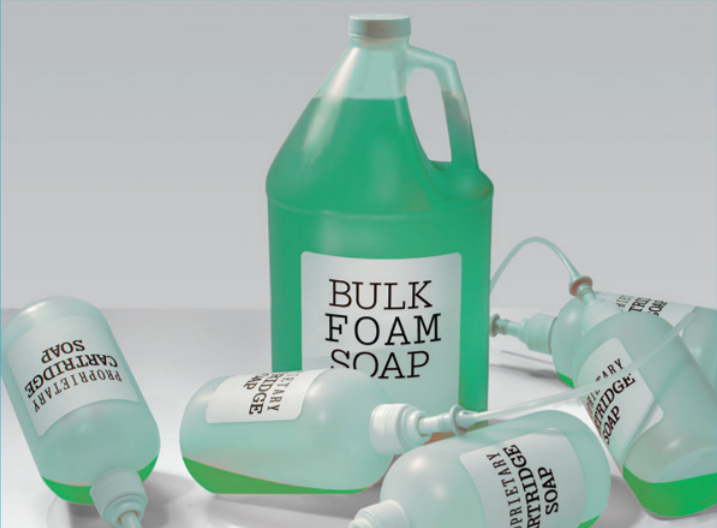[et_pb_section bb_built=”1″ admin_label=”Orange Template Header Image” _builder_version=”3.17.6″ custom_padding=”||0px|” next_background_color=”#000000″ disabled_on=”off|off|off” disabled=”off”][et_pb_row custom_margin=”-4%|||” module_id=”orange-banner-image-row” _builder_version=”3.17.6″ custom_padding=”0px|||” padding_top_1=”0px”][et_pb_column type=”4_4″][et_pb_image align=”center” _builder_version=”3.17.6″ src=”https://www.bobrick.com/wp-content/uploads/Free-Vend-Blog-Header.jpg” force_fullwidth=”on” show_bottom_space=”off” custom_css_main_element=”max-width:100%;height:100%;” /][/et_pb_column][/et_pb_row][/et_pb_section][et_pb_section bb_built=”1″ specialty=”off” prev_background_color=”#000000″ next_background_color=”#000000″ _builder_version=”3.17.6″ custom_padding=”||0px|” disabled_on=”on|on|on” disabled=”on”][et_pb_row _builder_version=”3.17.6″ custom_margin=”-4%||0px|” custom_padding=”0px||0px|” padding_top_1=”0px” padding_bottom_1=”0px”][et_pb_column type=”4_4″][et_pb_code _builder_version=”3.17.6″][yoast-breadcrumb][/et_pb_code][/et_pb_column][/et_pb_row][/et_pb_section][et_pb_section bb_built=”1″ _builder_version=”3.17.6″ custom_padding=”0px||0px|” prev_background_color=”#000000″ next_background_color=”#000000″ custom_margin=”0px||0px|”][et_pb_row _builder_version=”3.17.6″ use_custom_gutter=”on” gutter_width=”1″ padding_right_1=”0px” padding_left_1=”0px” padding_right_2=”0px” padding_left_2=”0px” padding_2_last_edited=”off|” padding_right_3=”0px” padding_left_3=”0px” padding_right_4=”0px” padding_left_4=”0px” padding_right_5=”0px” padding_left_5=”0px” padding_right_6=”0px” padding_left_6=”0px” animation_style=”slide” animation_direction=”left” custom_width_px=”900px” module_alignment=”left” custom_css_main_element=”max-width:900px;”][et_pb_column type=”1_6″][et_pb_image admin_label=”Blog – Design POV” src=”/wp-content/uploads/values-design_100.gif” _builder_version=”3.17.6″ custom_padding=”0px|0px|0px|0px” /][/et_pb_column][et_pb_column type=”1_6″][et_pb_image admin_label=”Blog – Hygienic POV” src=”/wp-content/uploads/values-hygienic_100.gif” _builder_version=”3.17.6″ custom_padding=”0px|0px|0px|0px” /][/et_pb_column][et_pb_column type=”1_6″][et_pb_image admin_label=”Blog – Sustainable POV” src=”/wp-content/uploads/values-sustainable_100.gif” _builder_version=”3.17.6″ custom_padding=”0px|0px|0px|0px” disabled_on=”on|on|on” disabled=”on” /][/et_pb_column][et_pb_column type=”1_6″][/et_pb_column][et_pb_column type=”1_6″][et_pb_image admin_label=”Blog – Compliant POV” src=”/wp-content/uploads/values-compliant_100.gif” _builder_version=”3.17.6″ custom_padding=”0px|0px|0px|0px” disabled_on=”on|on|on” disabled=”on” /][/et_pb_column][et_pb_column type=”1_6″][et_pb_image admin_label=”Blog – Economical POV” src=”/wp-content/uploads/values-economical_100.gif” _builder_version=”3.17.6″ custom_padding=”0px|0px|0px|0px” disabled_on=”on|on|on” disabled=”on” /][/et_pb_column][/et_pb_row][/et_pb_section][et_pb_section bb_built=”1″ admin_label=”Orange Body ” specialty=”on” disabled_on=”on|on|on” _builder_version=”3.17.6″ custom_margin=”0px|||” custom_padding=”0px|||” custom_css_main_element=”height: 100%;” prev_background_color=”#000000″ custom_css_main_2=”border-left: 2px solid #e2e2e2;” padding_top_1=”0px” padding_top_2=”0px” make_fullwidth=”on” next_background_color=”#000000″ disabled=”on”][et_pb_column type=”3_4″ specialty_columns=”3″][et_pb_row_inner admin_label=”Row” _builder_version=”3.17.6″ custom_margin=”0px|||” custom_padding=”0px|||” padding_top_1=”0px” disabled_on=”on|on|on” disabled=”on”][et_pb_column_inner type=”4_4″ saved_specialty_column_type=”3_4″][et_pb_post_title meta=”off” featured_image=”off” _builder_version=”3.17.6″ title_font=”Lato||||||||” disabled_on=”on|on|on” disabled=”on” /][/et_pb_column_inner][/et_pb_row_inner][et_pb_row_inner admin_label=”Row” _builder_version=”3.17.6″ custom_margin=”-6%|||” custom_margin_last_edited=”on|phone” disabled_on=”on|on|on” disabled=”on”][et_pb_column_inner type=”4_4″ saved_specialty_column_type=”3_4″][/et_pb_column_inner][/et_pb_row_inner][/et_pb_column][et_pb_column type=”1_4″][/et_pb_column][/et_pb_section][et_pb_section bb_built=”1″ specialty=”off” prev_background_color=”#000000″ _builder_version=”3.17.6″ custom_margin=”0px|||” custom_padding=”0px|||”][et_pb_row _builder_version=”3.17.6″ custom_margin=”0px|||” custom_padding=”0px|||”][et_pb_column type=”4_4″][et_pb_text admin_label=”Body Left” module_id=”pg-orange-body-text-left” _builder_version=”3.17.6″]
SOLUTIONS TO MEET DEMAND FOR FREE FEMININE PRODUCT VENDORS
Between changes in patron preferences and new legislation, free feminine products are increasingly seen as a necessity.
Today, public schools in particular are using free feminine product vendors to support the health and comfort of female students while reducing absentee rates. Even some private facilities and retail establishments are using free vend products to build stronger connections with and show concern for their customer base. Manufacturers have a responsibility to fulfill these needs with product options—and Bobrick has done just that.
The prospect of offering free feminine hygiene products may strike concern for some facility owners who consider the long-term cost of consumables like tampons and sanitary pads. Thus, many facilities are considering token-vend products to provide this valuable service while also controlling the rate of consumption.
As laws and preferences prompt specifiers and facility managers to consider free sanitary napkin/tampon vendors, Bobrick has reacted to the trend with an unmatched selection of free-vend solutions, including new token-vend products to meet the needs of cost-conscious facilities.
[/et_pb_text][et_pb_code _builder_version=”3.17.6″]
*Map last updated on 04/08/2019
[/et_pb_code][et_pb_text _builder_version=”3.17.6″]
Equity Legislation
In an effort to improve student health, reduce absentee rates and promote focused learning, several states and municipalities have enacted legislation requiring free feminine care products in public schools.
In 2016, New York City passed a legislative package making free feminine hygiene products available in all city public schools, shelters and correctional facilities. In 2017, the Illinois State Legislature passed a law requiring bathrooms in schools with grades 6 through 12 to make tampons and sanitary napkins available at no cost.
In 2018, a new law took effect in California requiring public schools serving grades 6 through 12, where 40 percent of students fall below to poverty line, to stock at least half of their bathrooms with free feminine products—approximately 4,000 schools meet this criteria, including about 12,000 students within the Los Angeles Unified School District.
Meanwhile, a Wisconsin legislator has reintroduced a bill that would make free tampons and sanitary napkins a requirement in restrooms in government buildings.
With other states and municipalities currently considering similar legislation and social movements, such as Free the Tampons, gaining traction, one thing’s clear—the free vend is gaining steam.
Promoting Dignity & Health
While current legislation has chiefly affected public schools and other public facilities, it’s worth noting that oftentimes, changes like these tend to eventually find their way into the state building code, which covers privately-owned commercial facilities.
Thus, architects and designers striving to achieve inclusive or universal design principles, may consider free vend solutions to not only satisfy the law but also create a more inclusive patron experience.
Any facility looking to meet the expectations of its female user base should consider how common it is for U.S. women ages 18-54 to have their period begin unexpectedly in public. The following survey results are courtesy of the Free the Tampons Foundation:
- 86 percent of women need access to supplies while in public
- 34 percent went home immediately to get feminine supplies.
- 48 percent only carry feminine hygiene products when expecting or experiencing their period.
These takeaways underscore the importance of increasing public access to feminine care products—when users don’t have the supplies they need readily available, work and school attendance can suffer.
The Value of Free
Some designers and facility managers may consider potential long-term operating costs when entertaining free vend solutions. However, studies show that users take the products they need and no more. In facilities where free vend has been introduced, users consume less than two products per year, on average. As most women have a preferred brand, the free product is viewed as a “last resort” for unplanned events only.
Further, since 2017, several states have already exempted menstrual care products from sales tax, including Connecticut, Florida, Illinois, Maryland, Massachusetts, Minnesota, New Jersey, New York and Pennsylvania. In addition, the following states are exempt from all taxes related to menstrual care products: Alaska, New Hampshire, Oregon, Delaware and Montana.
For operators, this underscores the cost-benefit of implementing free-vend—in most cases, the service benefit will far outweigh the cost of consumables. That’s why Bobrick has reacted to the free-vend trend with an unmatched selection of free- and token-vend products.
[/et_pb_text][/et_pb_column][/et_pb_row][/et_pb_section]











